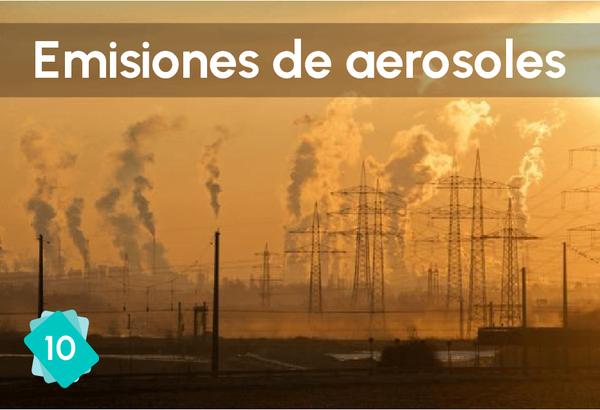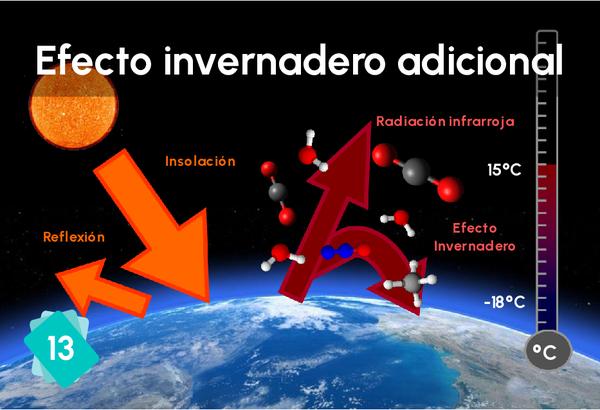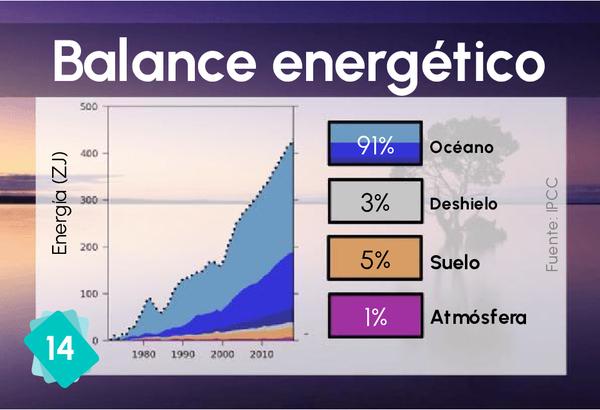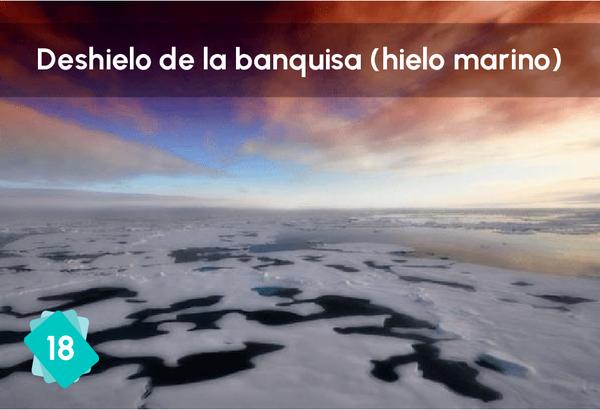15 - Forzamiento radiativo
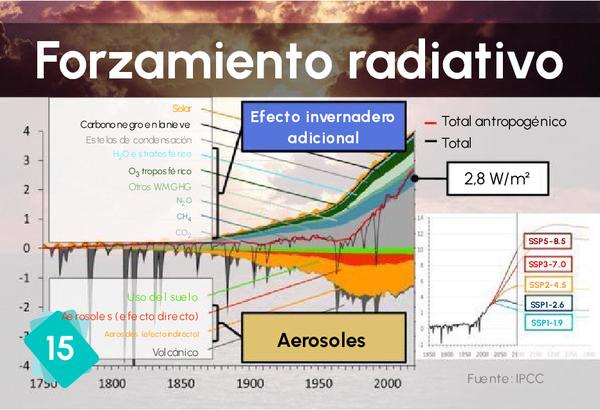
✏️ Esta explicación aún no está disponible en tu idioma, haz clic aquí para sugerir tu traducción o escribe un correo electrónico a fdc.memo@marc-antoinea.fr.
Together with the coccolithophores, this card is the one that impresses the players the most. It is important to explain it well. One way to play it down is to say that Radiative Forcing is just a measurement. The Earth receives energy from the Sun and radiates it back to space in the form of infrared rays. It should be in a state of thermal equilibrium and the average temperature should be constant. Anything that causes the Earth to move away from this thermal equilibrium, whether natural (sun, volcanoes) or anthropogenic (aerosols, GHGs), is called radiative forcing. Caution: the definition has been simplified for educational purposes. A rigorous definition would be as follows: "Radiative forcing is the measure of the imbalance between the energy that arrives every second on Earth and the energy that would leave if the temperature had remained fixed since 1750". As the earth's temperature has risen in the meantime, the delta between instantaneous heat exchanges has decreased. Similarly, in 2050, in the RCP2.6 scenario, the forcing will be 2.6 W/m2, but the temperature will have stabilised, meaning that the delta between incoming and outgoing energy will be zero. On the main graph, we can see the different components of the radiative forcing: in the upper part, the warming effects in the lower part, the cooling effects. The greenhouse effect (CO2 + Other WMGHG + Trop O3) represents a positive forcing of 3.1 W/m2. It is therefore in the upper part of the graph. Aerosols (Aer - Rad Int. + Aer - Cld Int.) have a cooling effect and are therefore in the lower part of the graph. For more details on this graph, see the Radiative Forcing fact sheet. The secondary graph represents the radiative forcing over two and a half centuries (history and projections). In the 5th IPCC report, the radiative forcing is 2.3 W/m2. The values of the forcing in 2100 gave their name to the IPCC scenarios (RCP 2.6, RCP 4.5 etc.). The colours of these scenarios can be found in the graphs of cards n° 5, 11, 15, 21, 22 and 24. For more details on this graph, see the fact sheet on PCR scenarios.
2Causas
Aerosols cool down the climate.
El efecto invernadero adicional hace que se retenga más calor en la Tierra, ejerciendo lo que se conoce como un forzamiento radiativo positivo, provocando un exceso de energía en la Tierra en comparación con 1850-1900 y, como consecuencia, la Tierra se calienta.
SOURCES: AR6 WG3 TS.3 p11 (p59) // AR6 WG1 Figure 7. : Température de forçage p979 (962)
1Consecuencia
1Otra causa posible
Cuando se derrite, el hielo marino que es blanco da paso a agua azul oscuro que tiene un albedo más bajo. El albedo es la capacidad de un cuerpo para reflejar la luz (un cuerpo negro tiene un albedo de 0, un espejo tiene un albedo de 1. La tierra tiene un albedo medio de 0,31). Así, la tierra absorbe más energía y se calienta. Es una retroalimentación, o bucle de amplificación. Esta relación no es indispensable, pero algunos participantes un poco expertos lo pensarán. FUENTES: AR6 WG1 7.4.2.3 : albedo de la superficie (p970) // AR6 WG1 Figura 7.10 : retroalimentación p996 (979) // AR6 WG1 Tabla 7.10 : retroalimentación p995 (978)




